The VW Amarok doesn’t look particularly special, its powertrain has been around forever in many other Volkswagen products, and it’s neither the best off-road, nor the most competent on-road. And yet, the Amarok I recently drove in Germany stood out among even the best trucks I’ve driven this year. Here’s why.
(Full Disclosure: My friend Jens Meiner, a freelance car journalist based out of the Nürnberg area, asked me if I wanted to drive a Volkswagen Amarok press vehicle that the automaker was planning to dump off at his home. As I’d been feeling a bit guilty about borrowing my friend Andreas’s green Toyota MR2 all summer and was in need of a bit of utility for my van build, I took Jens up on the kind offer.)
I can’t say I was particularly excited about the truck. I knew it’d be convenient to have the thing, convenient enough that I’d take it even though I was sure it’d be so boring I wouldn’t be able to find anything to write about it.
But even a boring car can sometimes surprise you, just like this Amarok did. In large part, I can thank the 3.0-liter turbodiesel under the hood.
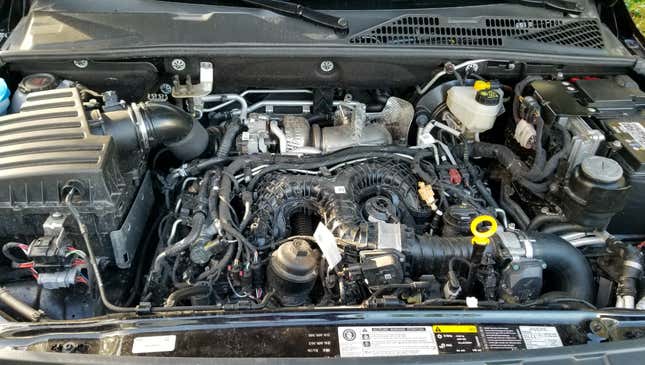
The Engine Is Good, The Transmission Is Okay
The powerplant is a variant of the same 3.0-liter TDI engine found in many, many Volkswagens and Audis from over the past 15 years or so. That includes the Touareg, Q7, and even the iconic Phaeton. While that may sound boring, the motor itself is exactly what I want in a truck.
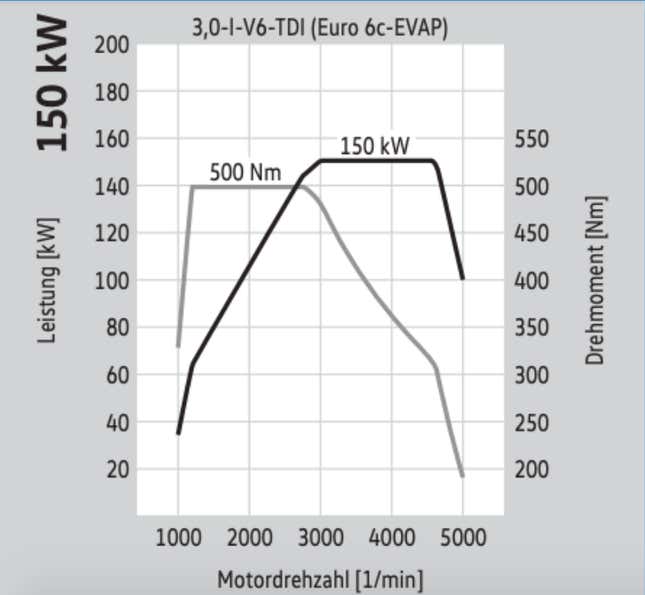
Full torque of 369 lb-ft (500 Nm) comes in at a low 1,250 RPM, which is excellent. Engine speed remains low most of the time, and the machine confidently produces grunt without making a big fuss of it. With 201 horsepower (150 kW), the truck is powerful enough and feels quite a bit quicker than the last Chevy Colorado 2.8-liter diesel I drove—that truck makes 20 less HP, has two fewer gears, and is, frankly, a dog to drive.
The Amarok isn’t as quick as the last EcoDiesel-powered Jeep I drove, but it still feels fun enough. At a combined 26 to 27 MPG on the EU cycle, it’s also not bad on fuel.
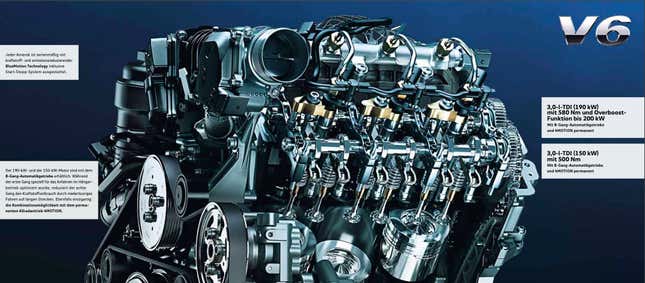
Helping with that fuel economy figure is the fact the 201 HP and 369 lb-ft are routed through a quick-shifting eight-speed automatic that made this black mid-size pickup feel fairly lively under tip-in. Exacerbating this feeling was the noise. Oh god, the noise.
Volkswagen outfitted the Dark Label edition that I drove—one of the last trucks sold in Germany, since the Amarok is now sadly gone from that market—with some cool accessories, including a light bar, rock rails, and snorkel.

The snorkel amplified the turbocharger induction noise, creating what was frankly one of the most satisfying sounds I’ve ever heard from a modern high-volume, non-supercharged production automobile. (Technically, turbocharging can be thought of as a form of supercharging, but let’s not get into that right now.) Listen to the ominous sound emanating from the snorkel when I lift off the throttle after a heavy tip-in. It is glorious:
I have to admit that I wasn’t a fan of the eight-speed automatic transmission’s shift calibration. While the gear changes happened quickly, I felt that they happened too often. It’s likely that the snorkel noise made that more apparent to me than a normal intake mounted under-hood, as with each shift, the hissing from that snorkel changed pitch.
Upshifts while accelerating and especially downshifts while decelerating to a stoplight yielded what sounded like Lord Vader himself suffering some sort of conniption outside of my passenger window. It was, to say the least, concerning. (At the same time, it was badass.)

Off-Road Equipment
Basically, what we have in this kitted-up Amarok is a cool-sounding, quick-ish and torquey mid-size pickup. But what about off-road capability? I honestly can’t tell you, because I did very little other than enjoy the noise it made as the 201-horsepower engine confidently propelled me through the streets of Erlangen, Germany.
But that doesn’t mean I didn’t take a look around the vehicle. No, I got on my back and took a peek underneath, and what I found was some decent hardware that should make the thing pretty damn good off-road. For one, there’s a locking rear differential, which I tested at a quarry (see above). Based on my limited testing, it seems to work well, as does the leaf-sprung solid rear axle, which—as you can see—offers good articulation to keep all four-wheels planted for maximum traction.
That axle, by the way, features a bolt-on skid plate for its differential. This is clearly an accessory (possibly offered through VW; I’m unsure), but it’s cool nonetheless, and should keep the pumpkin and pinion from picking up deep scratches and dents. I also noticed a bash-plate under the front chin, likely there to protect powertrain and powertrain-cooling bits:
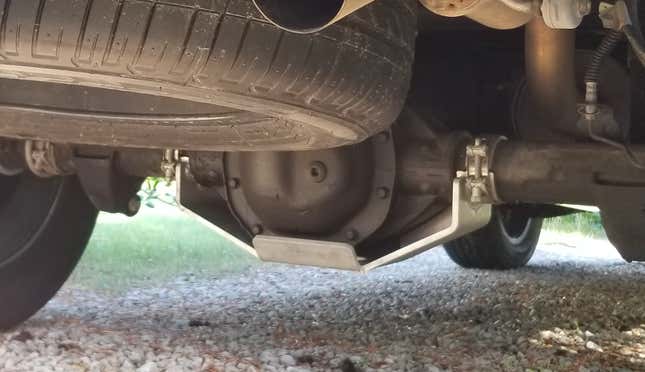

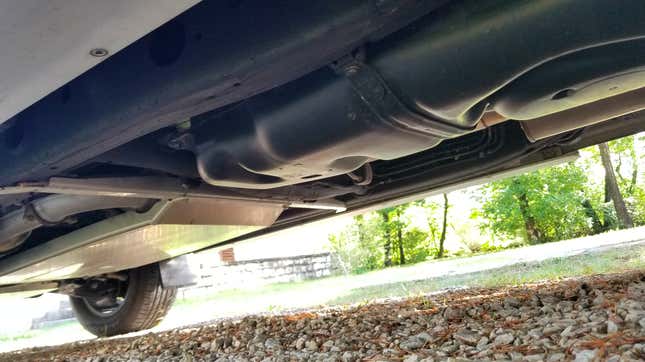
In the belly area, I saw a skid plate for the transmission, though the fuel tank remains unprotected and does appear to sag a little bit below the boxed frame rails. (Note that the standard Chevy Colorado ZR2 also does not protect its high density polyethylene fuel tank, though the Jeep Gladiator does.)
The Wolfsburger’s off-road geometry isn’t great, however. The approach angle of 29.5 degrees is solid, but the 7.6 inches of ground clearance, 18 degree departure angle, and 15.6 degree breakover angle mean this truck is likely to drag its belly and arse around the off-road park. Just 20-inches of water fording capability means nose-diving into the drink is also probably not the smartest move in this, though with the snorkel, I’m sure that figure goes up.
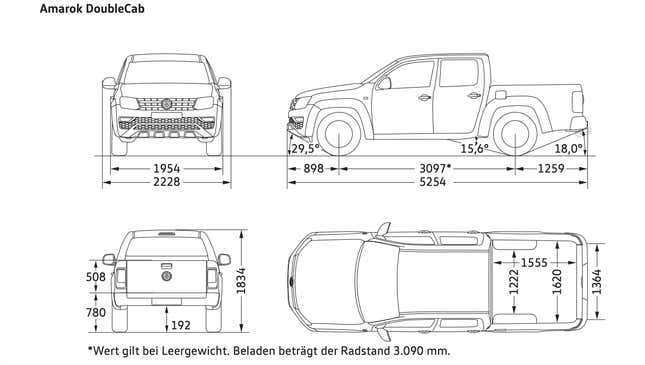
Still, those numbers aren’t terrible, and—with a body-on-frame design, a fairly basic suspension setup, skid plates, a locking rear diff, and especially that torquey diesel motor breathing down your neck—the truck seems like a great base setup for an off-road build. A lift kit and some larger tires would go a long way, though after a certain point, I’d want a low-range ratio in the four-wheel drive system. (The Amarok’s 4Motion system is unfortunately a permanent, single-speed four-wheel drive system.) You can see a stock truck in the first off-road video below, and a modified one in the second. It looks glorious:
A Boring, But Rugged Interior
I’m not going to spend much time talking about this truck’s interior. It’s bland, in a very VW-ish sort of way, but there’s an old-school stick-style transmission shifter, knobs for the important radio controls, basic cloth seats you don’t have to care about, and an awesome vinyl floor:
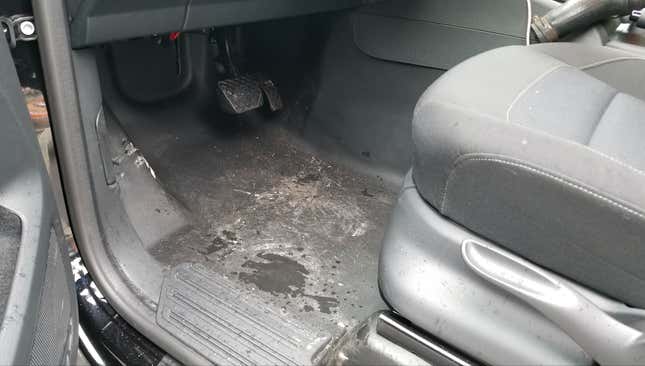
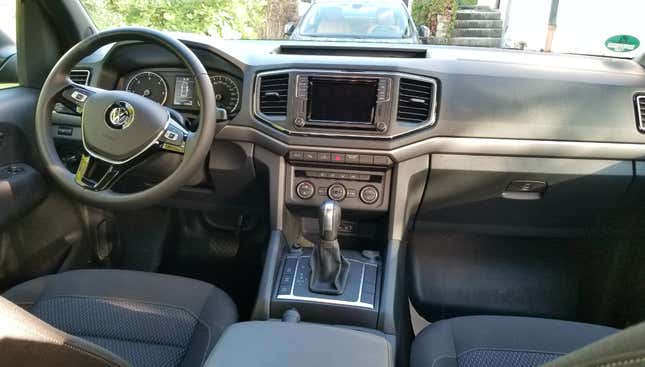
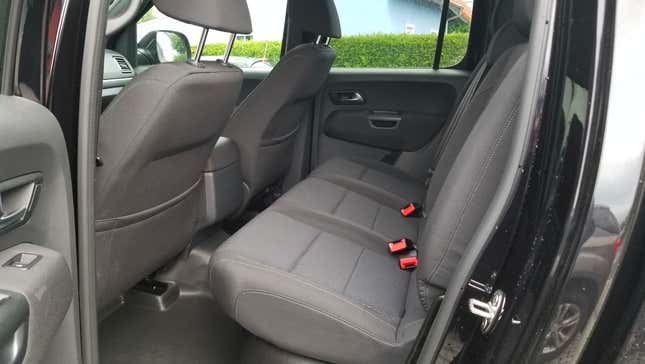
I haven’t seen vinyl flooring outside of a work-truck application in quite a while. It’s easy to hose down, and it doesn’t stain. For a pickup, I’m a big fan. My test truck came outfitted with a bunch of accessories, including a sliding bed cover, and a light bar. Despite its diminutive size and odd position on the back of the roof, it punished the night with an onslaught of lumens.
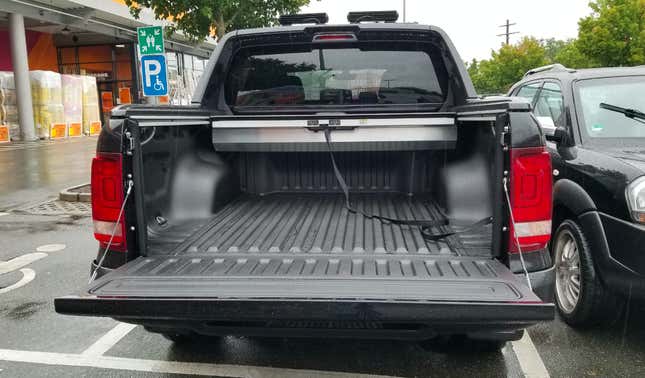
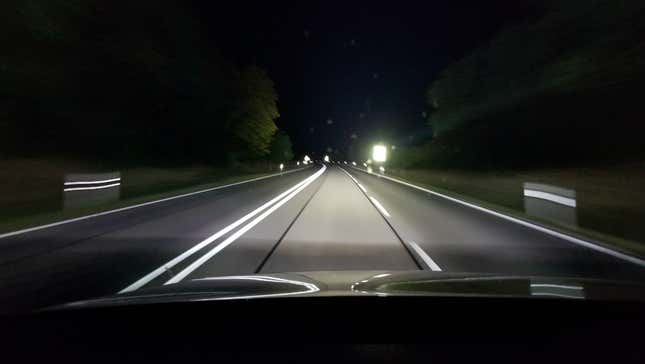
The last thing I’ll say about the truck is that it feels like it’s the right size. It’s not as small as a Nissan Frontier, which has been on the market since 2004, when trucks were smaller in general. But it’s shorter than the Ford Ranger, though the same overall width.
Unlike the Jeep Gladiator, it’s actually a real mid-size truck, at least dimensionally. Add the torquey and efficient engine, the awesome Darth Vader snorkel sound, a locking diff, vinyl flooring and good skid plate coverage, and you’ve got a badass machine.
Would I drop $50-ish grand on it? Absolutely not. No way in hell. Seriously, just look at that interior. But it’s a basic, torquey, efficient, seemingly rugged truck that sounds awesome and rides well. Though I only drove it briefly, I can say the Amarok—despite being a bit old—is actually one of the better midsize pickups I’ve driven lately. That’s surprising, because this wasn’t a truck I asked to review. It just sort of landed in my lap, and I must say: I’m glad it did.